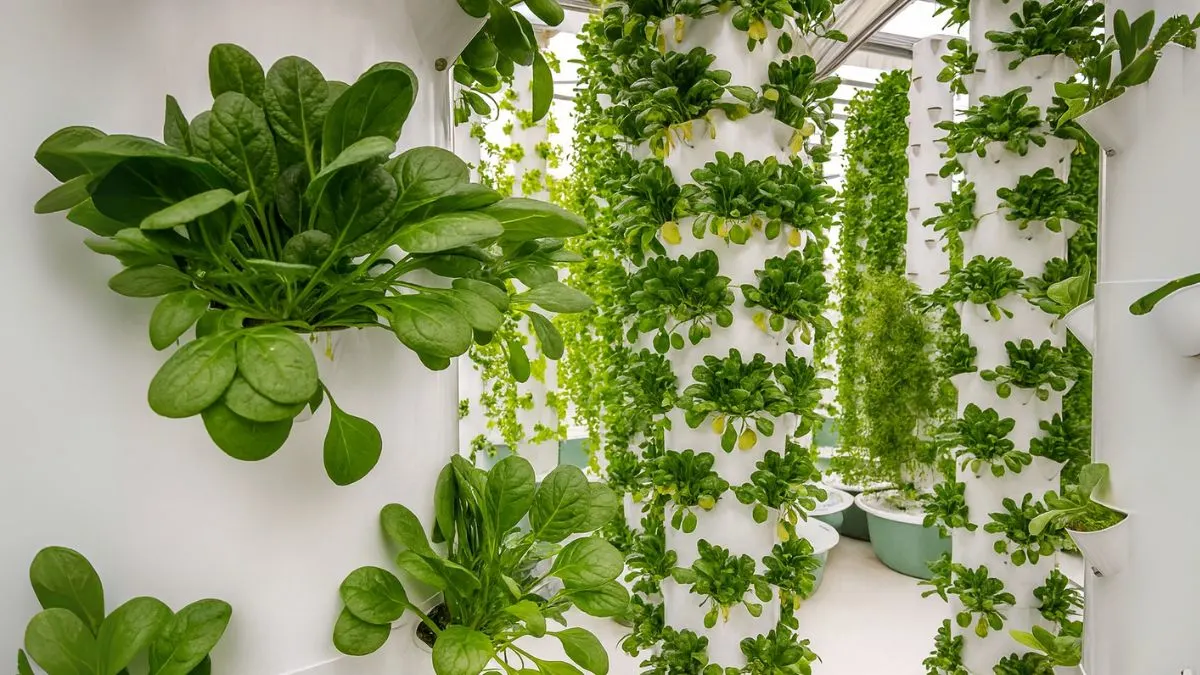Imagine harvesting fresh lettuce, herbs, or strawberries without ever touching soil. Sounds futuristic? It’s not. With aeroponic tower gardens, this is possible right in your home, balcony, or even office. For people living in cities where space is precious, this modern gardening technique is a game-changer.
I started my first tower garden last summer on my small apartment balcony in Toronto. To my surprise, it produced enough basil and lettuce to last me weeks, all while looking like a piece of living art.
This blog will guide you through what aeroponic towers are, how they work, and why they’re the future of home-grown food.
What is Aeroponic Gardening?

At its core, aeroponics is a way to grow plants without soil. Instead, plant roots hang in the air and are misted with nutrient-rich water. This process allows plants to absorb nutrients more efficiently, leading to faster growth and healthier harvests.
Compared to traditional gardening:
- Uses 90% less water.
- Requires no weeding or digging.
- Produces higher yields in smaller spaces.
Why Choose Aeroponic Tower Gardens?
- Perfect for Urban Spaces: One of the biggest advantages is efficient farming in urban areas where space is limited. Whether you live in a condo, townhouse, or city apartment, a vertical tower can fit into small balconies or indoor corners.
- Year-Round Harvest: Since plants grow in controlled conditions, you can harvest fresh greens all year round—regardless of Canada’s harsh winters or the USA’s hot summers.
- Eco-Friendly: These systems save water, reduce pesticide use, and cut down food miles by allowing you to grow food at home.
Also Read: Struggling with Hanging Plants? This Is What You’re Doing Wrong
Setting Up Your Aeroponic Tower Garden
The good news? Setting up your own aeroponic tower garden at home is a rather simple process.
Step 1: Choose Your Tower System
There are ready-made towers available, or you can DIY with PVC pipes and a pump.
Step 2: Add Water & Nutrients
Fill the base with water and add hydroponic nutrients. These are easily available online or at garden centers.
Step 3: Plant Your Seeds or Seedlings
Place seedlings in growing pods inserted into the tower slots. Within weeks, you’ll see them thriving.
Step 4: Light & Maintenance
If indoors, provide grow lights for 12–14 hours a day. Outdoors, just ensure it gets 6–8 hours of sunlight.
Popular Plants to Grow in Aeroponic Towers
Plant Type |
Why It Thrives |
Lettuce |
Grows fast, crisp leaves. |
Basil |
Loves moist roots and grows abundantly. |
Spinach |
Compact, nutrient-dense, and quick to harvest. |
Strawberries |
Perfect in vertical systems, delicious fruit. |
Cherry Tomatoes |
Compact vines that climb towers beautifully. |
From herbs like oregano and parsley to flowers like petunias, you’ll be amazed at the variety of crops you can grow.
Also Read: Don’t Buy Cauliflower Again! Grow It From Seeds Like a Pro
Aeroponic vs Hydroponic Tower Gardens
Many people confuse the two. While both are soilless systems, there’s a subtle difference.
- Aeroponics: Roots are suspended in air and sprayed with nutrients.
- Hydroponics: Roots grow in water enriched with nutrients.
Both are effective, but hydroponic tower gardens are a perfect way to grow nutritious food if you prefer water-based systems. Aeroponics, however, offers faster growth due to better oxygen access.
Personal Experience: From Skeptic to Believer
When I first read about tower gardens, I was skeptical. Could a few pipes really produce more than my backyard garden? But after setting up a unit, the results spoke for themselves. The lettuce heads were not just larger but also crispier. Friends who visited couldn’t stop admiring my indoor green wall.
It became more than food—it was a conversation starter, a stress reliever, and a way to reconnect with nature despite living in a city.
Cost vs Benefits
Yes, initial setup costs can seem high. But think of it as an investment.
- Saves grocery bills in the long run.
- Reduces reliance on store-bought produce (which often travels thousands of miles).
- Provides healthier, pesticide-free food for your family.
Challenges and How to Overcome Them
- Electricity dependence: Towers need pumps or lights indoors. Solution: Use timers and energy-efficient pumps.
- Nutrient management: Too little or too much can harm plants. Solution: Follow instructions carefully.
- Initial learning curve: Like any new skill, it takes practice. Solution: Start with easy crops like lettuce and basil.
Also Read: Crocuses Varieties That Will Bloom Before Winter’s Over
Future of Farming: Why Aeroponics Matters
With urban populations growing, the demand for food is increasing. Traditional farming alone cannot meet this demand sustainably. Aeroponic tower gardens and other vertical farming methods are paving the way for cities to produce their own food locally.
Major cities like New York and Toronto already have large-scale vertical farms. But the beauty is—you don’t have to wait for big companies. You can start small, at home.
Whether you’re a gardening enthusiast or a city dweller with no backyard, aeroponic tower gardens are a modern solution to age-old problems. By embracing this innovative method, you’ll save space, grow healthier food, and make your home greener.
So why wait? Start experimenting today. Because the future of farming isn’t just in the fields—it’s right in your living room.






